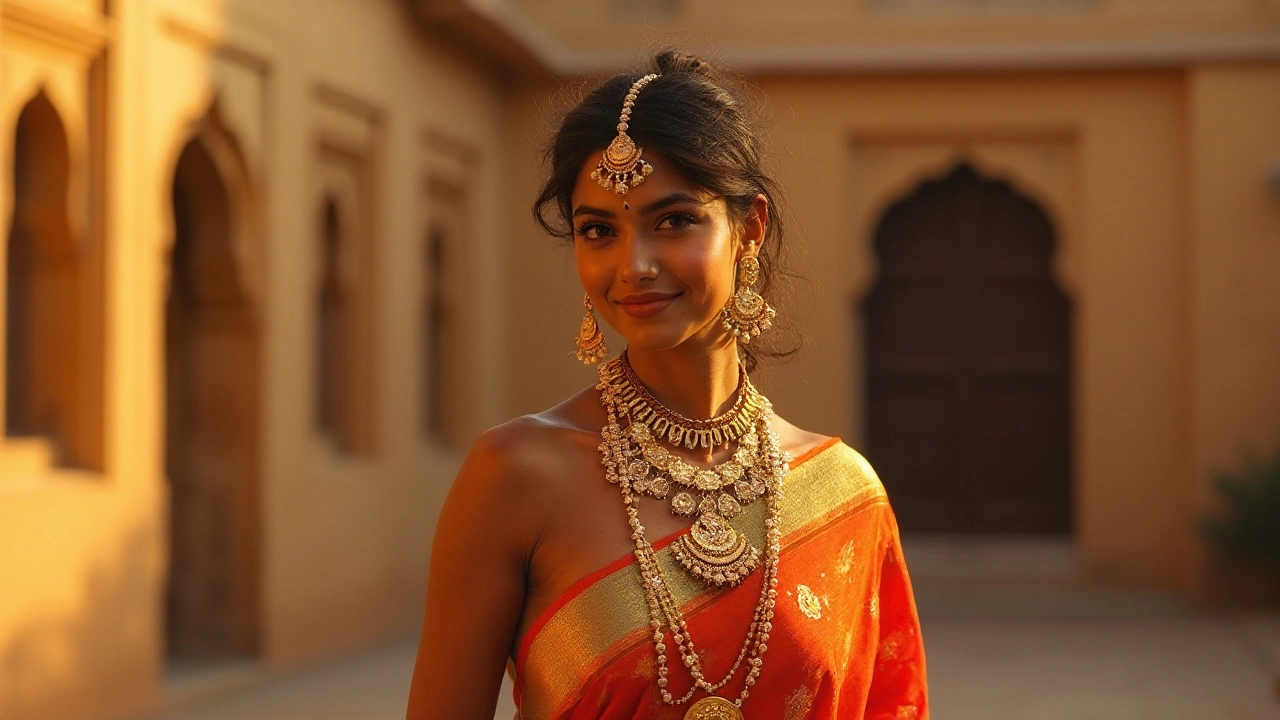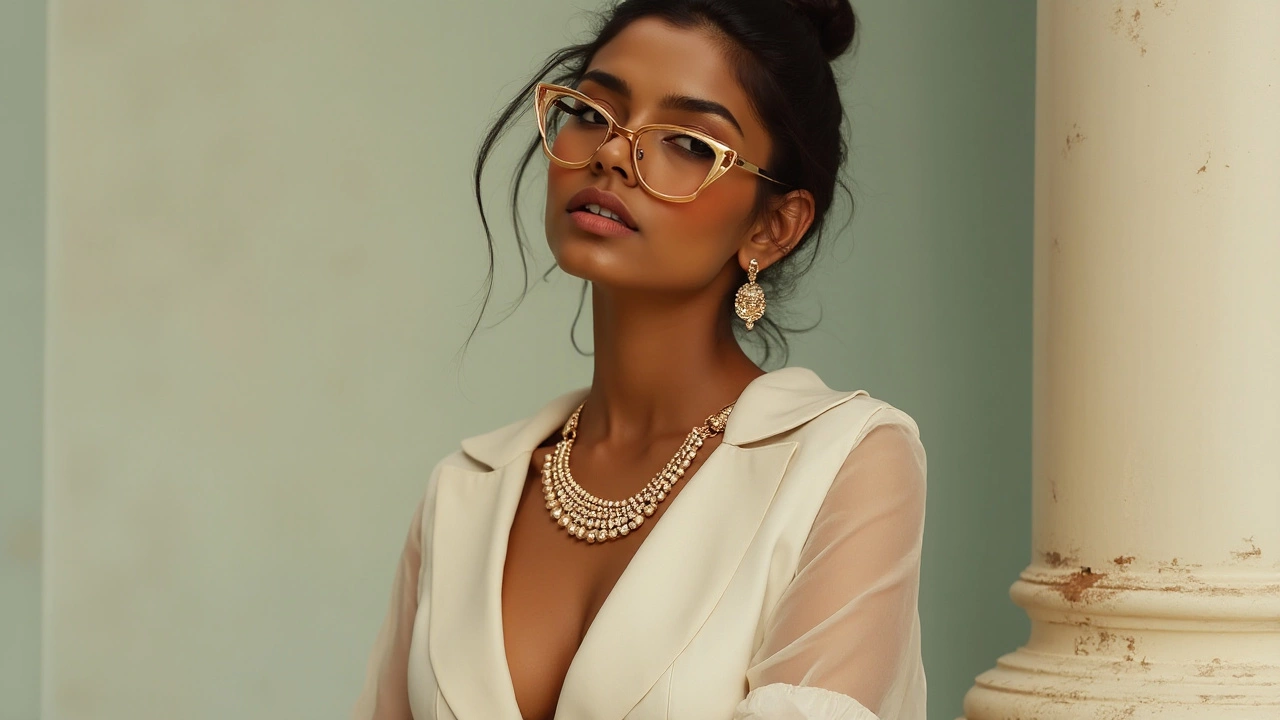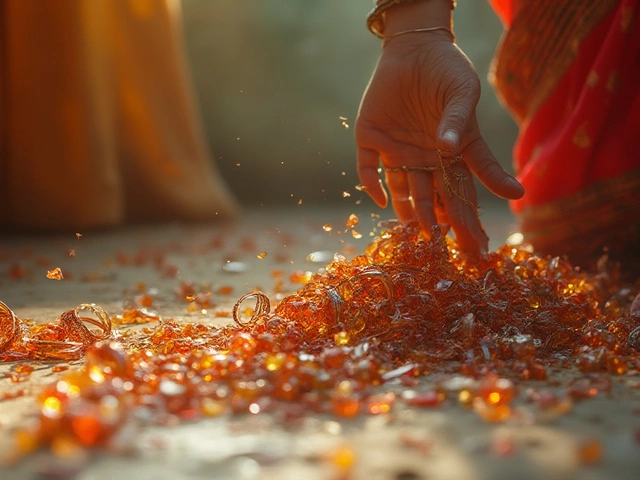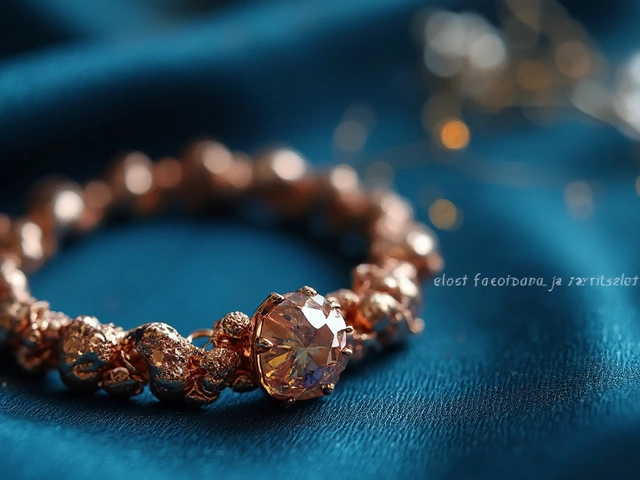
Gold isn't just the yellow gleam most people imagine when they think of this precious metal. With a wide array of colors now available in jewelry design, understanding the different hues can help you make informed choices to suit both your style and personality. From the romantic blush of rose gold to the timeless appeal of white gold, and even the unconventional green gold, the colors of gold jewelry offer something for everyone.
While personal preference is a key factor in selecting the right shade, there are also considerations regarding skin tone compatibility and the occasion for which the piece is intended. This exploration into the colorful world of gold can guide you towards making a choice that not only looks good but also feels right. Dive into this vivid exploration of gold's many faces to discover how you can incorporate these enchanting shades into your collection, ensuring your jewelry is as unique as you are.
- The Spectrum of Gold Colors
- Historical and Cultural Influences
- Gold Colors and Skin Tones
- Trending Gold Jewelry Designs
- Tips for Choosing the Right Gold Color
The Spectrum of Gold Colors
Gold has been a favored material in jewelry design for centuries, yet the classic yellow hue is just the tip of the iceberg when it comes to the vibrant spectrum of gold jewelry today. The allure of gold lies not only in its innate luster but also in its versatility to morph into a variety of shades, each with its distinct charm. These variations in color are achieved through the meticulous blending of gold with other metals, known as alloys. By mixing gold with different metals like silver, copper, and nickel, jewelers create an array of colors that can cater to individual preferences and styles.
The most well-known, of course, is yellow gold, prized for its warm, radiant glow that symbolizes purity and prosperity. Its popularity has endured for generations, often representing classic and traditional aesthetics. However, the spectrum extends beyond the familiar. White gold, for instance, has gained significant popularity due to its modern and sophisticated appeal. Created by blending gold with metals like nickel or palladium, and often plated with rhodium, it offers a cooler, more contemporary alternative.
Rose gold, on the other hand, boasts a romantic and vintage allure, achieved through a higher concentration of copper in its mix. Its pinkish hue has found favor among those who appreciate a unique twist on the traditional, evoking both warmth and elegance. What's fascinating is that there is even more to discover with less common hues such as green and even black gold, each carrying their own unique blend and appeal.
As the famed French designer Coco Chanel once said, "In order to be irreplaceable, one must always be different." This sentiment is beautifully captured in the diversity of gold colors available today.
Each color of gold brings with it a specific set of characteristics, both in terms of appearance and practicality. Beyond just aesthetics, the choice of gold color can also affect the durability and weight of the piece, which is crucial information for those investing in their jewelry wardrobe. While yellow gold is often the softest and most malleable, the inclusion of other metals can enhance the strength and resilience of the jewelry piece. This wide spectrum allows jewelers to craft pieces that suit every taste, occasion, and style. Whether it's the classic feel of yellow gold, the sleek look of white gold, or the romantic touch of rose gold, each color opens new avenues for personal expression in gold jewelry.
Historical and Cultural Influences
Gold has been cherished by human civilizations across the globe for thousands of years, each cultivating its own unique story of this precious metal. The Egyptians, known for their opulent burial practices, adorned their pharaohs in gold jewelry, believing it to be the flesh of the gods. The allure of gold jewelry persisted through the ages, with ancient Romans and Greeks crafting elaborate pieces that signified wealth and power. As you examine the granularity of gold’s history, its color variations play an intriguing role. Remarkably, the ancient Egyptians were among the first to experiment with manipulated colors, engineering alloys with metals like copper to yield captivating hues such as rose gold. This not only showcased their advanced metallurgical skills but also introduced cultural narratives through design, reflecting elements of their environment and beliefs.
In Asia, particularly in India and China, gold holds a cultural significance that transcends mere ornamentation. Passed down through generations, gold jewelry is often infused with a mix of traditional and local aesthetics using playful hues. Indian gold jewelry frequently features gold colors like rose and yellow gold, embodying elements of prosperity and spiritual wealth. Meanwhile, the Chinese tradition of gifting gold during festivals and weddings emphasizes harmony and good fortune. The aesthetic choice of colors within these traditions speaks volumes about the underlying societal beliefs, providing an enduring connection to the historical past.
Modern Influences and Globalization
As the world became increasingly connected, the fascination with different jewelry design colors grew. The Western industrial era saw the rise of white gold as an economical alternative to platinum, especially during times of economic strife. This movement was driven by practical needs but soon evolved into a style symbol embraced by contemporary jewelers. Fast forward to today, and we witness an unprecedented blending of the old and the new. Jewelers now draw on these historical cues, blending techniques to produce color shades that align with modern tastes. A study from the World Gold Council illustrates how gold color preferences shift with global fashion trends, suggesting a vibrant future for this centuries-old art.
"Gold remains a timeless piece of human history, evolving with us yet consistently anchoring our cultural identity." – World Gold Council Report.
Influences from media, celebrity culture, and digital globalization have democratized access to these unique gold jewelry styles, allowing people from different walks of life to engage with this heritage. The resulting dynamic blend of historical and modern influences assures that gold jewelry, in its myriad of colors, continues to captivate and evolve. This fusion is further reinforced by the innovative spirit of contemporary jewelry artists who explore bold color experiments, blending cultural significance with personal expression, ensuring gold's timeless appeal endures across generations.

Gold Colors and Skin Tones
Choosing the right shade of gold for your jewelry isn't just about personal preference; it's also about finding a hue that accentuates your complexion. Different types of gold can complement various skin tones in unique ways, making your jewelry stand out even more. Understanding how these colors work with your skin can significantly enhance the appearance and impact of your pieces. Traditional yellow gold, with its warm and radiant glow, generally complements warmer skin tones beautifully. It enhances the natural warmth in the skin, creating a harmonious and balanced look. Individuals with either a neutral or tanned complexion often find yellow gold an effortless addition to their style palette.
On the other hand, white gold is versatile, offering a cooler, more subtle sheen that pairs well with cooler skin tones. It provides a chic contrast against fair and rosy complexions, highlighting the lighter shades without overpowering them. Those who prefer a modern or minimalist aesthetic are typically drawn to white gold not just for its elegance but for its ability to seamlessly integrate with various fashion choices. An interesting trend is emerging with the increasing popularity of rose gold. This unique blend, with its pinkish hue, appeals to a wide range of skin tones. Often considered romantic and vintage, rose gold can add a soft and feminine touch to any outfit.
"The soft warmth of rose gold has a universal appeal, blending seamlessly with a myriad of skin tones," says jewelry expert Claire Wilson.
Green gold is perhaps the most unconventional choice and can be a striking option for those looking for something truly unique. With its subtle olive undertone, it can beautifully complement olive and warm skin tones. Not as overtly popular as its counterparts, green gold is increasingly becoming a choice for fashion-forward individuals who wish to make a statement. To ensure you're making the best choice, consider testing different gold jewelry against your skin under various lighting conditions. This will illuminate how each hue interacts with your natural tones. With each option offering distinct virtues, exploring the palette of gold jewelry allows you to tailor your look to celebrate and enhance your unique beauty.
Trending Gold Jewelry Designs
The world of gold jewelry has never been more exciting, especially with the myriad of design trends emerging this year. From minimalistic pieces that capture subtle elegance to bold, statement-making art forms, jewelry design continues to evolve and expand, catering to a wide range of tastes and styles. One of the most prominent trends is the incorporation of mixed-metal designs. Combining different types of gold, such as rose and white gold, creates a visually striking contrast that appeals to those looking to break away from tradition. The play on different gold hues not only enhances the intricate details of the piece but also allows for more personalized designs that are as unique as the wearer.
Another burgeoning trend is the resurgence of vintage-inspired styles. Designers are reimagining classic motifs, drawing inspiration from the Victorian, Art Deco, and even the Retro eras. These pieces often feature elaborate engravings and intricate filigree work, a nod to the craftsmanship of bygone times. Cluster settings, which boast multiple stones grouped together, are gaining traction as well, offering both brilliance and depth to each piece. They're particularly popular in engagement rings, where they provide a unique twist on the traditional solitaire diamond. As quoted by renowned jewelry designer, Pandora Ross,
"The charm of vintage-inspired gold jewelry lies in its timelessness, capturing the essence of history while embracing modern elegance."
The trend of personalization continues to dominate the gold jewelry scene, with consumers increasingly seeking pieces that tell their own stories. This customization trend ranges from engraved initials and birthstones to fully bespoke designs crafted in collaboration with the designer. As technology advances, 3D printing is becoming an essential tool in this aspect, allowing designers to experiment with complex geometries and intricate designs that were once impossible by traditional means. Additionally, symbolism plays a major role in today's jewelry trends, with designs often carrying deeper meanings and personal significance. The mystical allure of celestial motifs featuring stars, moons, and constellations remains popular, especially when combined with captivating colored gemstones.
Eco-friendly and sustainable practices are also at the forefront of jewelry design trends, driven by growing consumer awareness and demand for responsibly sourced materials. Ethical sourcing of gold and conflict-free gemstones are more significant than ever, making recycled gold a sought-after option. With sustainability being a prominent factor, designers prioritize transparency and ethical practices, cultivating trust and loyalty with their customers. This shift towards sustainability doesn't come at the cost of style or quality, as innovative techniques and materials offer stunning alternatives that rival traditional methods.
Beyond individual pieces, jewelry layering continues to be a favored styling technique, allowing wearers to express their creativity by mixing and matching different designs. Layering involves combining various lengths and styles, whether it's necklaces, bracelets, or rings, and gold jewelry is perfect for this trend due to its versatility and timeless appeal. A common strategy is to layer delicate chains with pendants or colliers of different lengths, creating a cascading effect that enhances outfit aesthetics. Pairing rings of different gold colors and stacking them on a single finger showcases the wearer's personal flair. The art of layering encourages experimentation, making every combination unique and enabling fashion enthusiasts to redefine their look daily.

Tips for Choosing the Right Gold Color
Choosing the gold color that suits you best isn't just about personal preference; it involves understanding how different shades of gold complement your skin tone, wardrobe, and personal style. Whether you're drawn to the traditional allure of yellow gold, the sleek elegance of white gold, or the romantic charm of rose gold, each color has its distinct appeal. Begin by examining your skin's undertone. Generally, cool-toned individuals look great in white gold, as its silvery sheen brings out the natural glow of cooler skin tones. Those with warm undertones might find that yellow or rose gold enhances their warmth, offering a flattering contrast that highlights their complexion.
Consider also the occasions for which you'll wear your gold jewelry. For everyday pieces, a classic staple like yellow gold can pair well with most outfits and settings, from casual outings to formal events. If you're seeking something unique and trendy, rose gold offers a contemporary twist, perfect for adding that extra bit of flair. White gold, renowned for its modern and polished look, is an ideal choice for professional settings or evening wear.
Think about what type of stones or other embellishments you'll pair with your chosen gold color. White gold often enhances the brilliance of diamonds and other colored gemstones, creating a striking contrast that can draw the eye. This is particularly important when selecting engagement or wedding rings, where the combination can make a significant difference in the ring's appearance. Conversely, yellow gold tends to enrich the warm tones in stones like rubies and sapphires, providing a lush and luxurious look.
Highlighting Jewelry Trends and Preferences
Keeps an eye on current jewelry trends when selecting your gold jewelry design. Fashion often influences color preferences, so understanding what's in vogue can help you make informed decisions that align with contemporary styles. Rose gold, for instance, has experienced a resurgence in popularity, thanks in part to its versatility and subtlety. Meanwhile, vintage trends have brought green gold into the spotlight, appealing to those who enjoy a more unique and unconventional aesthetic. As Yves Saint Laurent said,
"Fashions fade, style is eternal."This timeless quote reminds us that while trends can help guide decisions, your personal style should be at the forefront.
It's also beneficial to consider the sentiments and cultural meanings associated with different gold colors. In many cultures, yellow gold symbolizes wealth and prosperity, making it a favorable choice for celebratory gifts and heirlooms. Rose gold, however, exudes love and compassion, thus perfect for romantic gestures. White gold, with its understated elegance, often signifies sophistication and status.
| Gold Color | Best for |
|---|---|
| Yellow Gold | Warm skin tones, traditional and vintage styles |
| White Gold | Cool skin tones, modern and professional looks |
| Rose Gold | All skin tones, trendy and romantic designs |
Ultimately, trusting your instincts and preferences when selecting the right gold color will ensure you find pieces that truly resonate with you and become cherished additions to your jewelry collection. Whether you aim to follow tradition or carve out your own path, the variety of gold shades available means there’s something for everyone. Embrace the diverse spectrum of gold and let your jewelry reflect your individuality.


